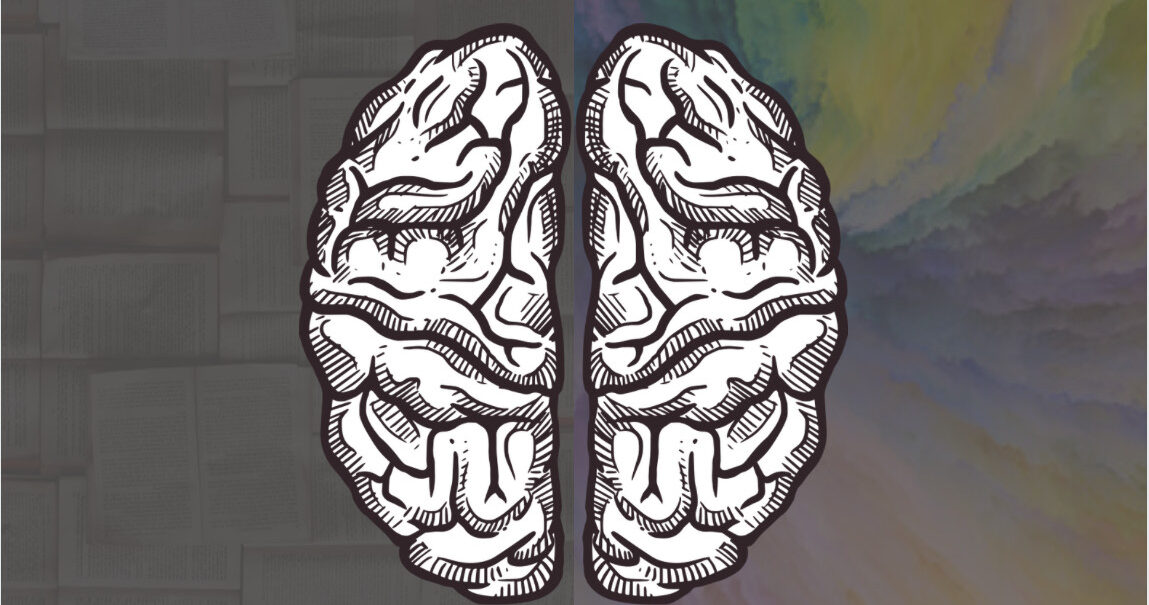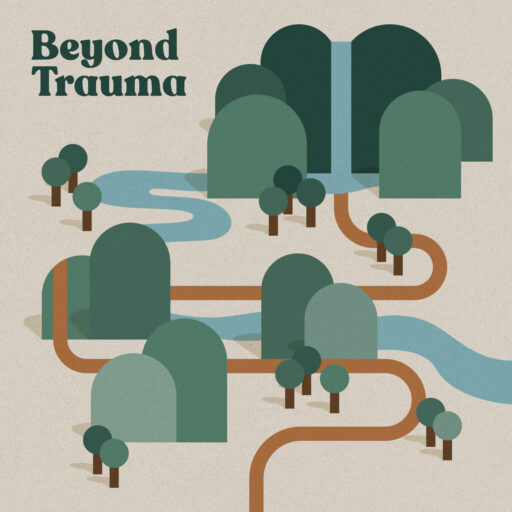Episode 15: Trauma and the Two Hemispheres

In this episode, we discuss the two hemispheres of the human brain and its relevance in the discussion of the impact of trauma.
What we know about the left and right hemispheres of the brain:
- “Left-brained personality” versus “right-brained personality”
- There’s an overemphasis on the differences and the divide between the two hemispheres.
- A lot of debate around how biologically accurate it is to stereotype personalities through the two hemispheres in the brain.
What is scientifically accurate:
- All of us use both sides of the brain and the sides are intended to be used in partnership.
- Everything is being communicated between the corpus callosum, the structure that connects the two hemispheres.
- The most dendrite-dense and electrically conductive material in the human body
- Dendrites are like telephone wires.
- Corpus callosum- the grand canyon analogy
What are the two sides of the brain responsible for?
- Still very widely controversial and debated.
- There’s much more we do not know about the brain and the nervous system than we currently do.
- Our hemispheres are both constantly in use and continuously communicating.
- The ways in which each hemisphere prioritizes and processes information from the environment and within our body has to be constantly categorized and translated in order to make meaning.
- How we make meaning of our living experience occurs through the connection of the two hemispheres.
What if one side was unable to communicate with the other?
- The example of the grand canyon where one of the representatives can’t talk or doesn’t show up to the meeting. Both hemispheres have to fill in the details when one is not doing its part.
- One side then has to make up its own story to make sense of the traumatic event.
- Information processing systems focus on the story rather than the emotional affect of the experience.
- Left brain experiences essentially disconnect from feeling the sensation from the experience in their body. “Well, obviously I was sad.”
What does it mean to consider and integrate both hemispheres in therapy?
- Both the left brain (story) and right brain (affect state, feeling, sensations) and are necessary in therapy.
- Right brained dominate person:
- Struggle with beginning, middle, and end.
- “I’m feeling this and it’s not organized.”
- “There’s not a clear story of this because it’s overwhelming.”
- “I can’t really remember what exactly happened but it was overwhelming”
The way we avoid remembering the trauma:
- Left brain will prepare a clean story.
- Right brain is more outwardly fearful of remembering and telling the story.
- “I can feel that something bad happened to me.”
What does our brain do when faced with an overwhelming event?
- “Too much too soon, too much for too long or too little for too long.” And/or no one was there to help.
- Decrease communication between hemispheres.
- Shut down sequence: becomes really relevant when we begin to talk about how we experience trauma.
- Trauma causes a breakdown of the normal information processing systems.
What is the information processing system of the human nervous system?
- Analogy 1- Elephant phone game
- We are taking in external sensations and then our brains process this through different systems.
- We are constantly searching for potential threats and evaluating whether or not we have the resources to handle the situation (fight/flight/freeze).
Memories:
- Function of our information processing system
- Eyewitnesses accounts are flawed.
- Humans have unique information processing systems.
- The reality you experience is solely yours.
- Information processing systems can pass events as lacking importance to some individuals.
- Example: 3 children have an alcoholic mother
- Oldest- uses a caretaking strategy to help protect themselves, their siblings and to keep mother alive.
- Middle child- tries to use distractions and entertainment as a strategy to try and keep us safe.
- Youngest child- over identify with mom and protect mom or hiding.
- Information processing systems of these children are going to change and evolve over time from this prolonged pattern in their childhood.
- Temperament, personality, birth order can all contribute to the strategies that a nervous system has learned.
The way we organize this information gives rise to hemispheric dominance:
- It is usually talked about in a top-down perspective, but they really arise from much deeper origins through the nervous system.
- The prefrontal cortex does not fully developed until 25.
- The left and right hemispheres are attempting to make sense of the developmental history of the brain.
How are the hemispheres supposed to function:
- Culture- proficiency, efficiency, productivity, achievement, individualism
- Western civilization latterly prioritizes left-brain dominance
- Worth is dependent on being right/ successful
- Iain Mcgilchrist– The Master and His Emissary
- The brain body connection
- “The Body Keeps the Score” Bessel Van Der Kolk
- The role of the left- “the voiceover in the movie”
What is the main takeaway point of this episode?
- First, it’s not about one or the other- it’s about both.
- Secondly, it’s about knowing your story and how you got here and who you are.
- Lastly, a true and embodied story



